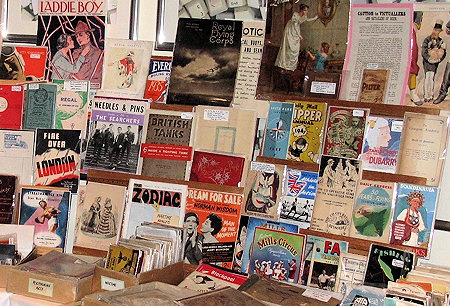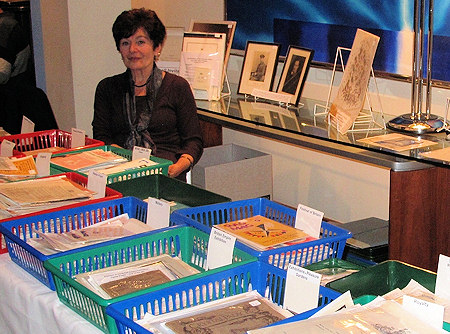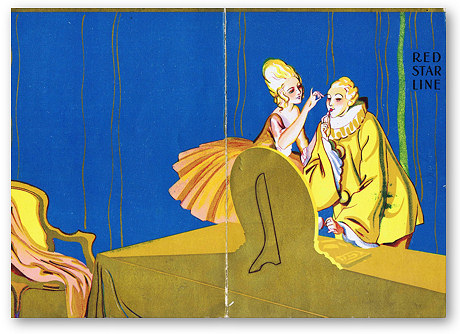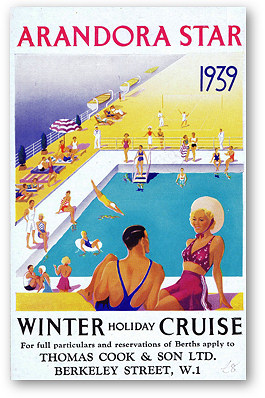Ephemera Society Winter Fair 2011:
another ephemera triumph
John Sayers
Whether you've come from Canada - as my wife, Judith, and I did - or from just a few miles away, an Ephemera Society Fair such as the one we attended in December is always a gratifying collector experience. Here's why.
This isn't a boot sale so the venue, in this case the Holiday Inn in Bloomsbury, is a warm, well-organized and inviting environment. The dealers bring quality material. And you can still find reasonably priced accretions to your collection that don't put you on a budget diet of bread and water for the following month.
As a Member of the Society we are entitled to an hour's early admission to the Fair. That may not sound like much of a head start, but it's a great window of opportunity for a dedicated collector.

Display expertise makes the experience an aesthetic as well as a collecting treat. Imagine seeing an enticing array of ephemera such as this one just after you've entered the Fair. The collector adrenalin begins to pump as you scan your way through this attractive display that brings to mind the current expression of 'eye candy'.

We always look forward to Judith Grant and her husband Jeffrey. Typical of the vendors, she knows her stock and knows her pricing.
A Canadian colleague was rhapsodic about a signed letter that he found at her tables. Because things are well organized, you don't have to spend half the day sorting through her offerings, and she can tell you whether she has any letters by the Pre-Raphaelites (my colleague's interest!) or whatever other topic you may be seeking.

There's such a wide selection of material that no serious collector will come away empty-handed. Even collectors who just buy what 'speaks to them' will find it a satisfying day. "So" you say, "What did you find that made it a satisfying day?" I'm glad that you asked, but we found so many things that I can only present a few. I've selected a representative few that demonstrate the completeness, aesthetic and historical qualities that all collectors seek.

This Red Star Line gem of the 1920s is the front and back cover for a 'name game' quiz that helped to pass the long days at sea. More importantly for me, it represented another application of the charming artwork that appeared on postcards, menus and other collateral of the Red Star Line during that period. I didn't have an example of the use on the cover of a Quiz before. I have it now.

Times were tough and money was short in the Depression years of the 1930s. Shipping lines suffered, and sought creative ways to fight for a bigger share of the passenger pie. One of those ways was to enhance the quality of the artwork in their brochures. We're not talking about Rembrandt quality art, but rather about commercial art that tells a story in a quick glance. In this case, the story is warmth in the winter months, and more specifically cruises to the West Indies on the Arandora Star of the Blue Star Line. Given that the size of this booklet is relatively tiny (3½ x 5½in) the cover has to be particularly attractive to seize attention.
I have saved the best (to me, historically) and the least expensive example to the last. For what I recall to be a pound, I picked up this tiny, innocuous-looking piece of paper. It may look unimportant but it links the past to some of our present economic climate.

Readers of my age will remember the era of Exchange Controls after the Second War. This piece, distributed to passengers on the RMS Queen Elizabeth, advises that the permitted export of British currency has been reduced to 5 pounds. The link to today is the roller coaster ride of currencies in the world, and the flight from, for example, bank accounts in Greece, to American dollars or at least accounts in Euros in another country. To redress balance of payments deficits could exchange controls once again be applied to Sterling? Another piece of ephemera already in my collection adds to the picture.
A few years ago I found a single printed sheet issued by The Midland Bank on the RMS Queen Mary listing the serial numbers of the various denominations of Sterling for which that branch of the Bank was responsible. The RMS Queen Elizabeth and RMS Queen Mary documents, representing both sides of the Exchange Control equation, give an insight to the rigour with which the outflow of currency was policed. Could the same controls be applied successfully today, one wonders. Controls would have to cover electronic transfers of funds, credit cards such as VISA, Debit Cards, and the entire spectrum of electronic banking - a major challenge. However, the fact that there is an electronic record and computer thresholds can be set for reporting variances suggests that it might work. Hopefully, the same straightened circumstances won't arise again in the UK.
So there's a hint of the sort of experience that you missed if you weren't able to attend the December Fair. However, looking ahead there's a full slate of this year's Fairs. We'll be there for one or more of them. Perhaps you'll be able to get there, too. Happy hunting!
John Sayers is the North American representative on the council of The Ephemera Society.
Copyright © John G Sayers 2012. All Rights Reserved.
|






